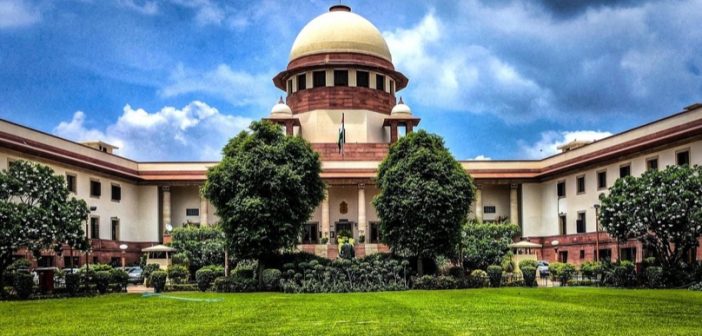Upholding the Pillars of Democracy
As the apex judicial body in India, the Supreme Court holds a revered position in the country’s legal system. Established under the Constitution of India, the Supreme Court serves as the guardian of justice, interpreting the law, protecting fundamental rights, and ensuring the rule of law prevails. This feature explores the inception, historical evolution, landmark cases, and pivotal role of the Supreme Court of India in shaping the nation’s legal landscape.
Inception and Historical Evolution
The roots of the Indian Supreme Court trace back to the British colonial era, with the establishment of the Federal Court of India in 1937. Initially located in Delhi, the Federal Court was entrusted with adjudicating disputes between the British government and Indian provinces. Following India’s independence in 1947, the Constituent Assembly of India drafted the Constitution, which envisioned a separate and independent judiciary to safeguard the rights and liberties of citizens.
On January 28, 1950, the Supreme Court of India came into existence, with Justice Harilal J. Kania serving as its first Chief Justice. Housed in the majestic building in New Delhi, the Supreme Court symbolized India’s commitment to upholding the principles of justice, equality, and the rule of law.
Role and Functions
The Supreme Court of India functions as the final interpreter of the Constitution and the highest appellate court in the country. Its jurisdiction extends to matters of constitutional interpretation, civil and criminal appeals, and disputes between the Union government and the states. The Court also has the authority to hear cases involving fundamental rights violations, public interest litigation, and constitutional matters of national importance.
As the guardian of the Constitution, the Supreme Court plays a crucial role in upholding the principles of democracy, separation of powers, and judicial independence. Its decisions and judgments have far-reaching implications, shaping legal precedents, influencing public policy, and safeguarding the rights and freedoms of citizens.
Landmark Cases and Judicial Precedents
Throughout its illustrious history, the Supreme Court of India has presided over numerous landmark cases that have left an indelible mark on the country’s legal landscape. From upholding fundamental rights to addressing socio-economic inequalities, the Court’s rulings have shaped the course of Indian jurisprudence.
One of the most iconic cases in Indian legal history is Kesavananda Bharati v. State of Kerala (1973), commonly known as the “Basic Structure Doctrine” case. In this landmark judgment, the Supreme Court articulated the principle that certain essential features of the Constitution, such as secularism, federalism, and the rule of law, are immutable and cannot be altered by Parliament.
Another notable case is Maneka Gandhi v. Union of India (1978), which expanded the scope of the right to life and personal liberty under Article 21 of the Constitution. The Court held that the right to life encompasses a broad range of freedoms and liberties, including the right to travel abroad and due process of law.
In recent years, the Supreme Court has grappled with complex issues ranging from environmental protection and gender equality to privacy rights and electoral reforms. Cases such as Navtej Singh Johar v. Union of India (2018), which decriminalized consensual same-sex relations, and Puttaswamy v. Union of India (2017), which recognized the right to privacy as a fundamental right, have set new benchmarks in Indian jurisprudence.
Challenges and Criticisms
Despite its esteemed stature, the Supreme Court of India faces several challenges and criticisms in fulfilling its mandate. Issues such as judicial backlog, delays in case disposal, and vacancies in judicial appointments have plagued the Indian judiciary, undermining public trust and confidence in the legal system.
Critics have also raised concerns about judicial activism, perceived bias, and accountability within the judiciary. The process of judicial appointments and collegium system has been a subject of debate, with calls for greater transparency, diversity, and reforms to ensure the judiciary remains independent and impartial.
Guardian of Justice and Sentinel of Democracy
In conclusion, the Supreme Court of India stands as a beacon of justice, safeguarding the principles of democracy, equality, and the rule of law. From its humble beginnings to its present-day prominence, the Court has remained steadfast in upholding the rights and liberties of citizens and interpreting the Constitution in the spirit of justice and fairness.
As India marches forward into the 21st century, the Supreme Court will continue to play a pivotal role in shaping the nation’s legal landscape, confronting new challenges, and upholding the pillars of democracy. With its unwavering commitment to justice and the rule of law, the Supreme Court of India remains a pillar of strength and a beacon of hope for the nation.






